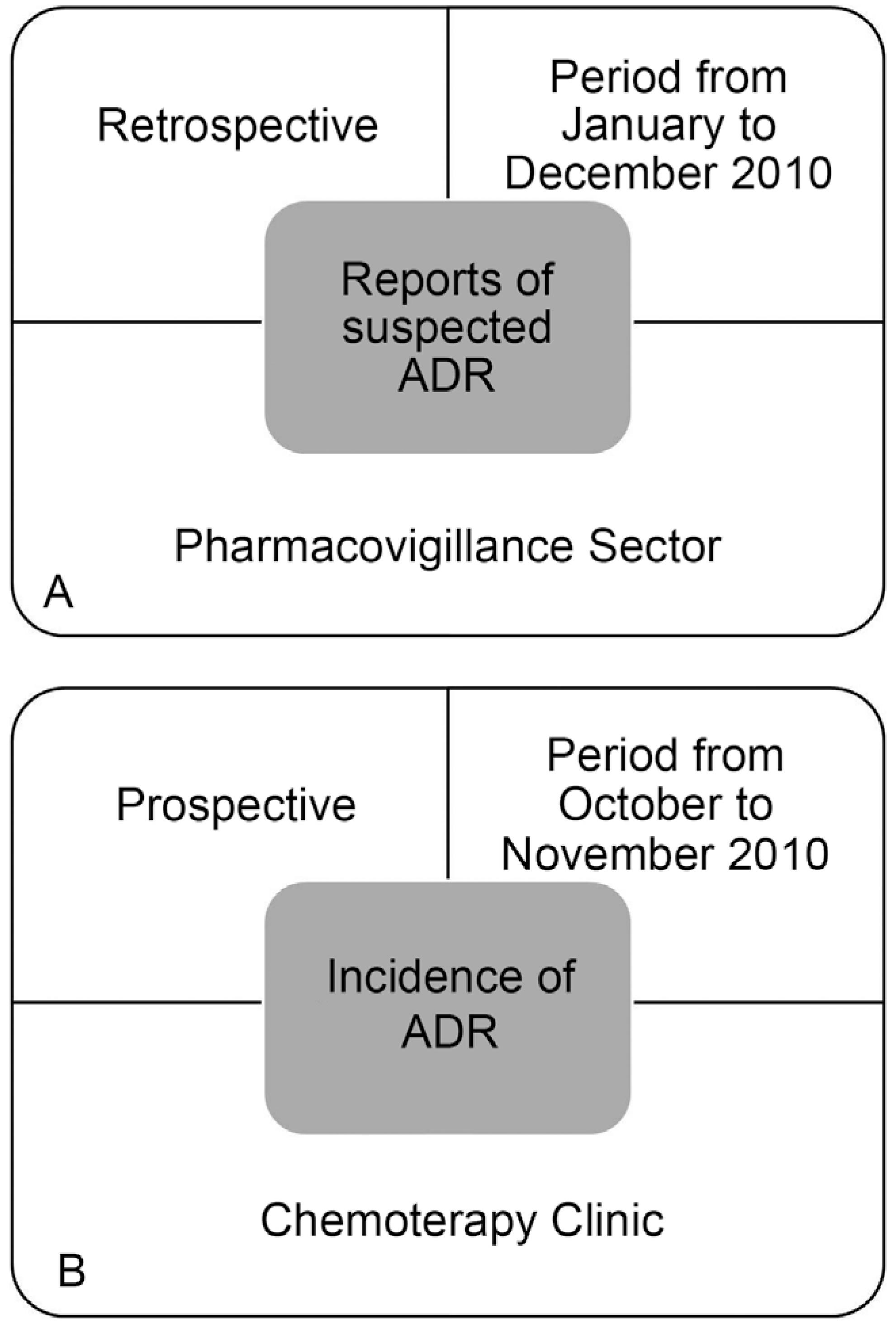The high toxicity and narrow therapeutic window of antineoplastic agents makes pharmacovigilance studies essential in oncology. The objectives of the current study were to analyze the pattern of spontaneous notifications of adverse drug reactions (ADRs) in oncology patients and to analyze the incidence of ADRs reported by outpatients on antineoplastic treatment in a tertiary care teaching hospital. To compose the pattern of ADR, the notification forms of reactions in oncology patients in 2010 were reviewed, and the reactions were classified based on the drug involved, mechanism, causality, and severity. To evaluate the incidence of reactions, a questionnaire at the time of chemotherapy was included, and the severity was classified based on the Common Terminology Criteria. The profiles of the 10 responses reported to the Pharmacovigilance Sector were type B, severe, possible, and they were primarily related to platinum compounds and taxanes. When the incidence of reactions was analyzed, it was observed that nausea, alopecia, fatigue, diarrhea, and taste disturbance were the most frequently reported reactions by oncology patients, and the grade 3 and 4 reactions were not reported. Based on this analysis, it is proposed that health professionals should be trained regarding notifications and clinical pharmacists should increasingly be brought on board to reduce under-reporting of ADRs.
Pharmacovigilance; Oncovigilance; Drugs/adverse reactions; Adverse drug reactions/under-reporting; Adverse drug reactions/Spontaneous notification; Clinical pharmacy

